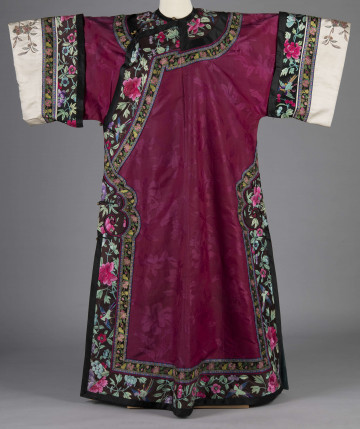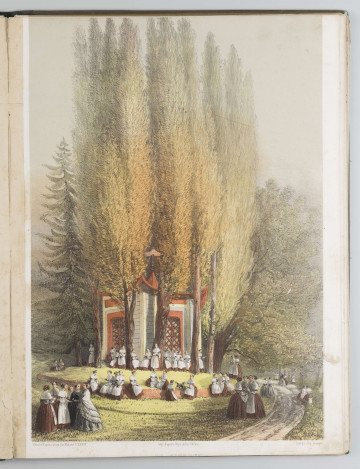
Court dress longpao
1880 — 1900
National Museum in Lublin
Part of the collection: Textiles, embroideries, clothing and costume accessories
Fans were already known in ancient Egypt and have taken different forms throughout history. They were made of more or less durable materials.
At first they served purely practical purposes, were used to cool off or to ward off insects. In the hands of rulers they emphasized their majesty and dignity, their subjects marked their status with them, in the hands of a warrior-knight they could be a dangerous weapon, and in the delicate hand of a lady they showed subtle elegance, gracefulness of movement, often a refined gesture, an element of the language of signs for the initiated.
With time, in various regions of the world, the practical function of this object receded into the background, acquiring many new, sometimes surprising cultural and practical meanings (for example, the Chinese combat fan or a tessen).
In Europe in the second half of the 16th century the oriental folding fan entered the canon of women's fashion accessories for a long time. It became possible thanks to lively trade contacts with China. Initially it was the Portuguese who brought thousands of fans along with other oriental goods by sea. They quickly gained popularity in Portugal and later in Spain and Italy. Catherine de' Medici, wife of the French ruler Henry II, introduced the fashion in France. The popularity of oriental products in the following years caused French artists and craftsmen to create their own type of painting decoration on silk or paper surface of the folding fan.
The demand for these items imported from the East did not diminish either.
Paper folding fans were very fragile and easily damaged, so few museums have well-preserved original products. The folding fan “with a thousand faces” depicts numerous figures with faces made with precise drawing on ivory pasted on the surface of asymmetrical paper covering. The colourful decoration refers to the decoration of oriental porcelain, also intended for export to Europe.
Every detail is refined with great care. Both the beauty and precision of the bas-relief surface and the original, picturesque and colourful decorations have determined the enduring fashion for these oriental accessories until modern times.
Magdalena Norkowska
Author / creator
Dimensions
cały obiekt: height: 60 cm, width: 30 cm
Object type
range
Technique
cutting
Material
paper, elephant bone, silk (natural fabric)
Creation time / dating
Creation / finding place
Owner
The National Museum in Lublin
Identification number
Location / status

1880 — 1900
National Museum in Lublin

1860
National Museum in Lublin

1600 — 1625
National Museum in Szczecin
DISCOVER this TOPIC
Museum of King Jan III's Palace at Wilanów
DISCOVER this PATH
Educational path